Till and turn, till and turn. This is the traditional method for amending clay soil. But what if I told you there was a surprisingly simple way to amend your clay soil without tilling? With just a few steps, you can easily improve the texture, fertility, and drainage of your clay soil – something that can be extremely difficult with more labor-intensive techniques. This blog post will discuss how to amend clay soil without tilling so that your gardening projects don’t have to be so time-consuming!
What Is Clay Soil Amending?
Clay soil amending is the process of improving clay soil by adding materials to the existing soil to increase its fertility, water-holding capacity, and drainage. Clay soils are notoriously hard to work with due to their small particle size and high levels of compaction. By adding organic matter such as compost or manure, larger particles can be introduced into the soil which will help create air pockets. This will improve both drainage and aeration in clay soils.
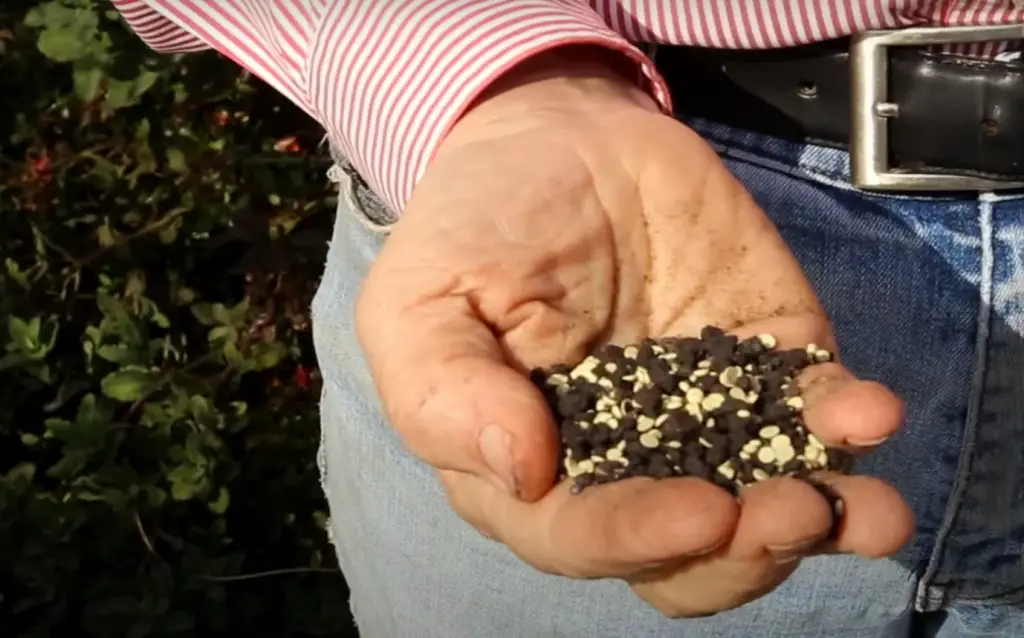
Additionally, applying gypsum to clay soils can help break down heavy clay particles and reduce surface crusting. When amending your clay soil, it’s important to keep in mind that certain amendments may make your soil more acidic or alkaline depending on what type you use and how much you add. It’s important to test the soil pH before making any amendments, as adding too much of a certain amendment can create an imbalance in your soil’s acidity or alkalinity.
Overall, clay soil amending is an essential step in creating healthier soils for plants to grow in. By improving drainage and aeration with organic matter and gypsum, as well as maintaining the correct pH levels, you can give your plants the best chance of success.
Amending Effects of Excessive Tilling of Clay Soil
Excessive tilling of clay soil can have a detrimental effect on the health of the soil. It can lead to an increase in erosion, compaction, nutrient leaching, and water runoff. This can reduce the soil’s ability to absorb moisture and sustain healthy plant growth.
Fortunately, some steps can be taken to amend these effects. The most important step is reducing or eliminating further tilling. If possible, this should be done over several years so as not to disrupt the delicate balance of nutrients and organisms present in the soil.
It is also beneficial to add organic matter such as composted manure or green manures (cover crops) to help improve the structure of clay soils. These materials will help to improve water-holding capacity, decrease runoff and erosion, and increase the overall nutrient content of the soil.
Applying mulches can also help to reduce surface compaction and erosion. The addition of organic matter also helps to create a better environment for beneficial organisms such as earthworms. Earthworms are essential for breaking down organic material and helping to aerate the soil, improving its structure.
Finally, it is important to adjust fertilizer levels based on soil tests so that excessive amounts of nutrients do not leach away from clay soils. This will help maintain optimal fertility levels while reducing potential environmental damage caused by over-fertilization [1].
Alternate Ways to Amend Clay Soil
Mix In Organic Compost
Organic compost is a great way to amend clay soil and improve its structure. Compost can help break up the heavy clay particles, adding air spaces to the soil that will make it easier for plant roots to grow.
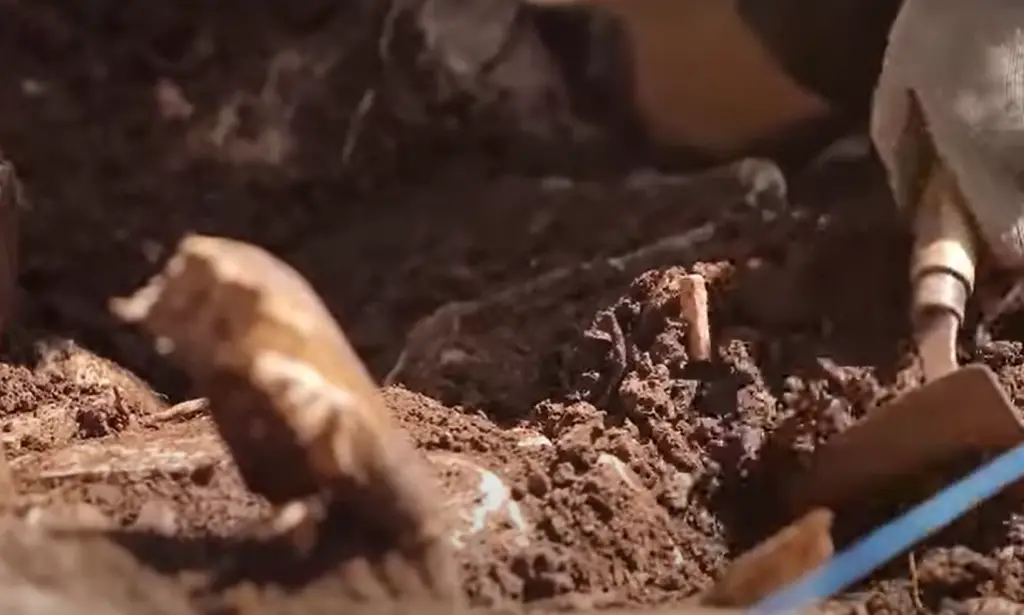
Adding organic compost also increases the water-holding capacity of the soil, which helps retain moisture in dry conditions and prevents nutrients from leaching out when it rains.
Add Sand
Mixing sand with clay soil can help loosen it up and create more space between individual particles so that water can drain better. The best type of sand for improving drainage in clay soils is known as horticultural sand or sharp builders’ sand, both of which are available at most garden centers or home improvement stores.
Mix In Peat Moss
Peat moss is a type of decomposed plant material with a spongy texture that helps bind loose clay particles together. It can be added directly to the soil at planting time, and it will help increase drainage while also improving water retention. Peat moss adds beneficial organic matter to your garden beds as well, further improving soil structure and fertility over time.
Add Gypsum
Gypsum is a natural mineral that can help break up clay soils by providing calcium ions which react with water molecules to dissolve clay particles. It is available at most garden centers or home improvement stores and can be spread directly over the soil surface before tilling or planting. However, it won’t improve drainage in soils with a high clay content, so it should only be used in combination with other soil amendments like compost or sand.
Cover Plants With Mulch
Mulching your plants is another great way to help break up heavy clay soils and keep them loose and airy. This is especially important for larger shrubs and trees that have deep root systems, as mulch will protect their roots from compaction while also reducing evaporation loss during dry periods. Just be sure to use organic mulches like bark chips or wood shavings that won’t pack down, as this can actually make the soil heavier and more difficult for plants to grow in.
Choose Appropriate Plants
Choosing plants that are well suited to growing in clay soils will help ensure that they thrive despite the challenging environment. Some types of shrubs, trees, grasses, flowers, and vegetables do especially well in heavy clay soils due to their deep root systems and ability to withstand occasional flooding.
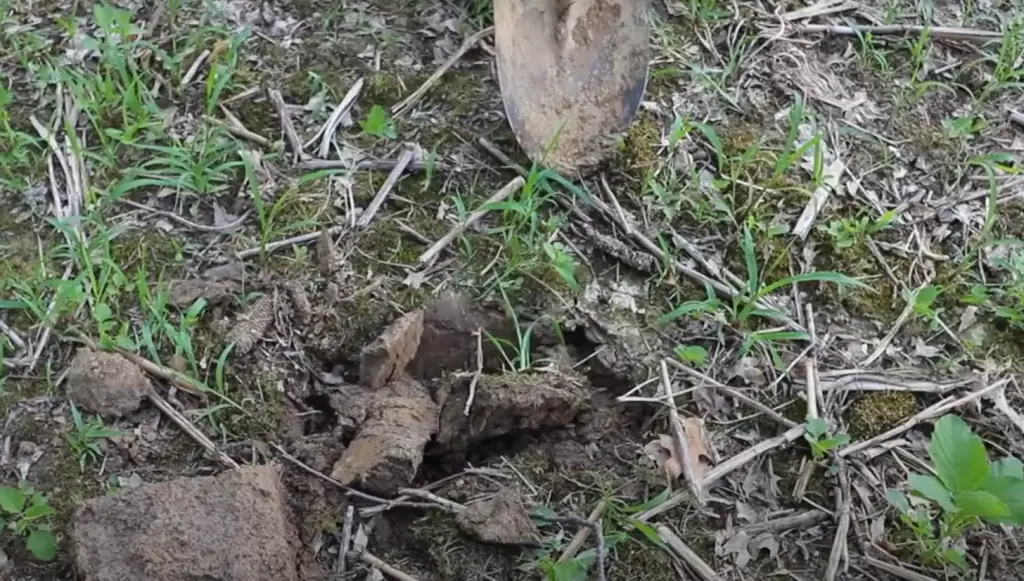
Look for native species or cultivars that are known to do well in clay soils, as these will be better able to tolerate the wet and dry cycles of these types of soils.
Plant Organic Cover Crops
Organic cover crops like legumes or grasses can help break up clay soils and improve their texture over time. These crops are planted in the fall and then plowed into the soil the following spring, where they add organic matter and nutrients while helping to loosen up heavy clay particles. Cover crops also attract beneficial insects that help keep pests away from your garden beds, making them a great way to naturally amend clay soils while protecting your plants.
Cultivate Regularly
Cultivating is an important part of improving clay soil structure, as it helps to aerate the soil by breaking up clods of clay and allowing air pockets to form. This can be done with a hoe or shovel on a regular basis, although it can be a labor-intensive process. Be sure to use light strokes and avoid digging too deep so as not to disturb the roots of your plants.
Avoiding Compaction
Compaction is a common problem in clay soils, as it can make the soil too dense for plants to penetrate. To avoid compaction, avoid walking or driving on garden beds when they are wet and never work your clay soils when they are saturated with water. As an added benefit, avoiding compaction will also help keep air pockets open in the soil, which helps promote healthy root growth and drainage.
Aerate Periodically
Periodic aeration of heavy clay soils is another way to improve their structure by breaking up clumps of clay particles and allowing air to enter the soil. This can be done with a tool called an aerator which is available at most garden centers or home improvement stores. Be sure to use light strokes and avoid digging too deep so as not to disturb the roots of your plants. Aerating your clay soils every couple of years will help to keep them loose and airy, improving the overall structure and drainage.
Add Lime
Another effective way to amend heavy clay soils is by adding lime to the soil.
You can buy agricultural lime at most garden centers or home improvement stores, and it should be applied according to package instructions for best results. Be sure to check your soil’s pH level first though, as too much lime can hurt some plants.Use Raised Beds
If your clay soil is especially heavy or difficult to work with, consider building raised beds instead of trying to amend the existing soil. Raised beds are elevated above the ground and filled with a mixture of organic matter like compost, sand, and peat moss that will provide better drainage for plants.

Building raised beds also helps to avoid compaction, as you won’t have to walk on them when working in the garden.
Control Runoffs
If you have clay soils with poor drainage and a tendency to waterlog, consider controlling runoff from heavy rains or irrigation so that water won’t collect in your garden beds. This can be done by redirecting downspouts away from garden beds, using gutters and rain barrels to capture runoff, and setting up swales or berms around beds to direct excess water away. Controlling runoffs will help keep your clay soils loose and prevent plants from drowning in standing water.
Creating the Best Amending Solutions
Clay soils can be difficult to work with but with the right amendments and techniques, you can turn them into productive garden beds. The best way to amend clay soils is by combining several different approaches such as adding organic matter like compost or peat moss, choosing the right plants for clay soil conditions, and controlling runoffs. With a bit of effort and patience, your clay soils will eventually become looser and more fertile over time [2].
What can you plant in clay soil?
Clay soil can be difficult to work with, but it has its advantages.
Grasses such as fescues and bluegrass also do well in clay soil. However, most vegetables require looser soils to produce healthy roots and leaves. If you are looking for plants that will thrive in clay soil, consider the following:- Evergreens: Evergreens are ideal for clay soils because their shallow root systems make them more tolerant of clay’s heavy and dense structure.
- Boxwoods: Boxwoods are hardy shrubs that require minimal maintenance. They are an excellent choice for clay soil gardens because they tolerate a range of soil types, including heavy clay soils.
- Hostas: Hostas are a low-maintenance perennial with attractive foliage. They do well in clay soils as long as there is good drainage.
- Daylilies: Daylilies have bright colorful flowers that bring life to any garden. Clay soils may cause the roots of these plants to rot, so it is important to ensure adequate drainage before planting them.
- Peonies: Peonies can be challenging to grow in clay soil, but they will thrive if provided proper care and nutrition. A bit of mulch can help improve drainage and provide needed nutrients.
- Astilbes: Astilbes are an elegant perennial flower that does well in clay soils as long as there is adequate moisture.
- Irises: Irises require moist, acidic soil to thrive. Clay soils should be amended with compost or peat moss to create the right environment for these plants.
- Sedges: Sedges tolerate a range of soil types, including heavy clay soils. They require consistently damp conditions and minimal maintenance once established.
- Grasses: Grasses such as fescues and bluegrass do quite well in clay soil, particularly if allowed to establish deep roots. These grasses are also known for their drought tolerance, making them a great choice for areas with dry summers [3].
FAQ
What is the cheapest way to improve clay soil?
A great way to improve clay soil without breaking the bank is to add organic material such as compost or manure. This will help break up and aerate the heavy clay, while also adding important nutrients.
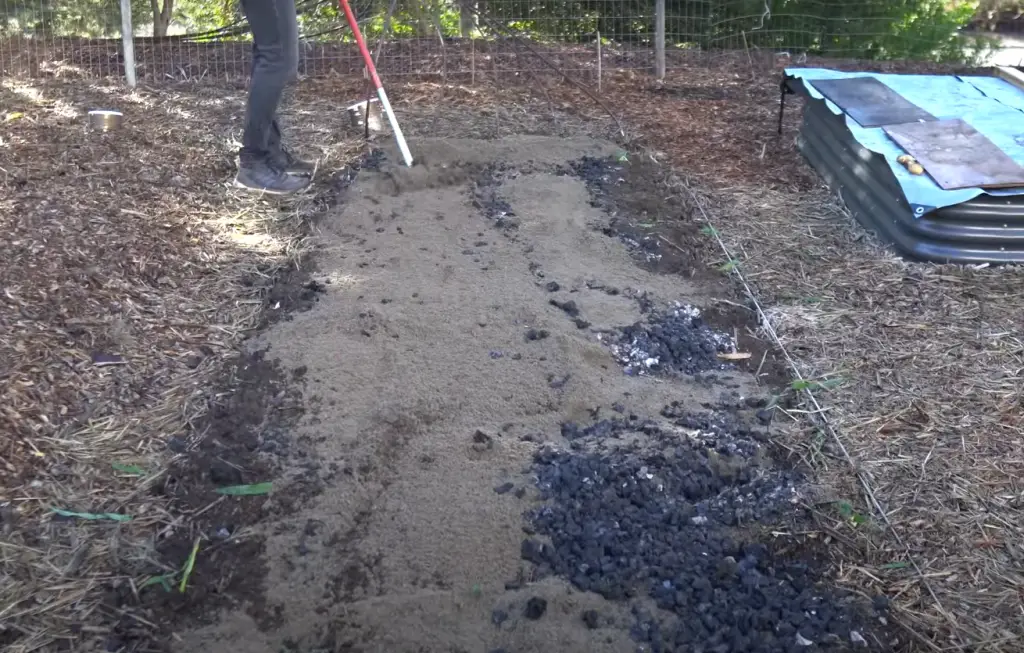
Another inexpensive option would be to use a soil conditioner like gypsum, which can help break down clay soils and make them easier to work with. Finally, you could have your soil tested and then apply specific nutrients that may be lacking from your soil to get it back into balance. Taking these steps will ensure that you have healthy, productive soil for years to come.
What are the best plants for clay soils?
Many different types of plants can thrive in clay soils including succulents, grasses, perennials, shrubs, trees, and even some vegetables. Some good plants for clay soil are Japanese Anemone, Astilbe, Hydrangea, Lavender, Hollyhock, Fruit Trees (Apple and Plum), Peonies, Sedums, and Daylilies. When planting these types of plants in clay soils it is important to make sure that the soil is well-drained by adding organic matter or a soil conditioner. Also, remember to water deeply but infrequently so that the roots can reach down into the soil and find nutrients there.
What should I do with my clay soil?
Now that you know what types of plants can thrive in your clay soil it’s time to get started! The first step is to test your soil so that you know exactly what nutrients it needs. Once you have the results, you can begin to amend your soil with organic material such as compost or manure. If needed, a soil conditioner like gypsum can also be used to help break down and aerate the heavy clay. Finally, you will want to water deeply but infrequently so that the roots of your plants can reach down into the nutrient-rich soil below.
What are the dangers of having too much clay in my soil?
Having too much clay in your soil can make it difficult for water and air to move through it, which means that your soil won’t be able to provide the essential nutrients and oxygen that your plants need. Additionally, clay soils can become compacted over time, making it difficult for roots to penetrate the ground and take up water and nutrients. Because of this, it is important to break up heavy clay soils with organic material like compost or manure, as well as add a soil conditioner like gypsum. Doing so will help improve the overall structure of your soil and make it easier for plants to thrive.
What type of fertilizer should I use on my clay soil?
The type of fertilizer you should use on your clay soil depends on what nutrients are lacking in your soil. The best way to know exactly what fertilizer to add is to have your soil tested so that you can determine what nutrients are needed. Once you know, you can purchase a fertilizer specifically designed for clay soils and use it according to the manufacturer’s instructions. With the right type of fertilizer, your plants will be able to get all the essential nutrients they need for healthy growth.
Is there anything else I should do for my clay soil?
In addition to testing your soil and applying the appropriate fertilizer, it is also important to make sure that your clay soil has good drainage by adding organic material such as compost or manure. This will help improve the structure of your soil and allow air and water to penetrate more easily. It is also recommended that you water deeply but infrequently so that the roots of your plants can reach down into the soil and find the nutrients they need. Taking these steps will ensure that your clay soil has all the essential components it needs for healthy, thriving plants.
How do you amend the soil with too much clay?
The best way to amend the soil with too much clay is to add organic material such as compost, manure, or leaf mold. This will help break up the heavy clay and make it easier for air and water to move through the soil. Additionally, using a soil conditioner like gypsum can also help break down and aerate the clay soils.
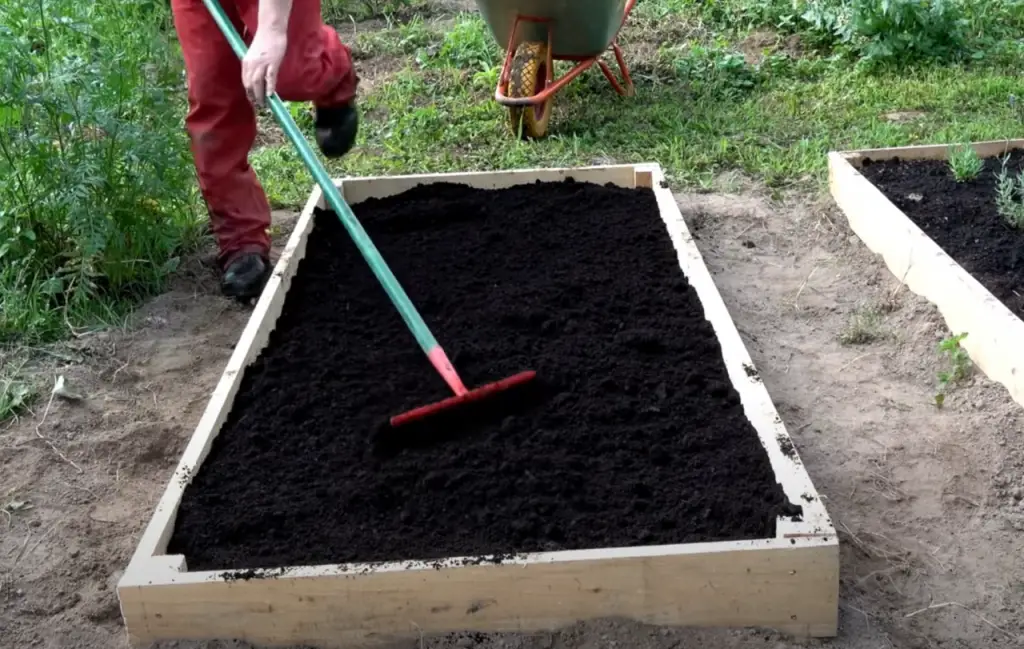
Finally, watering deeply but infrequently will allow the roots of your plants to reach down into the soil where they can find essential nutrients. Taking these steps will ensure that you have healthy, productive soil for years to come.
What is the best product to amend clay soil?
The best product to amend clay soil is organic material such as compost, manure, or leaf mold. This will help break up the heavy clay and make it easier for air and water to move through the soil. Additionally, a soil conditioner like gypsum can also help break down and aerate clay soils. Finally, adding specific nutrients that may be lacking from your soil can help get it back into balance. Taking these steps will ensure that you have healthy, productive soil for years to come.
Should clay soil be tilled?
Clay soil should not be tilled as it can cause compaction and prevent water and air from moving through the soil. Instead, it is best to add organic material such as compost or manure to break up the heavy clay and help improve drainage. Additionally, a soil conditioner like gypsum can also help break down clay soils and make them easier to work with. Finally, watering deeply but infrequently will allow the roots of your plants to reach down into the nutrient-rich soil below.
How do you break up clay soil fast?
The best way to break up clay soil quickly is to add organic material such as compost or manure. This will help break down the heavy clay and make it easier for air and water to move through the soil. Additionally, a soil conditioner like gypsum can also help break down the clay soils and make them easier to work with. Finally, you could have your soil tested and then apply specific nutrients that may be lacking from your soil to get it back into balance.
What are the 2 disadvantages of clay soil?
The two main disadvantages of clay soil are poor drainage and compaction. Clay soils tend to be very dense, which makes it difficult for air and water to move through them. Additionally, because clay particles are so small they can easily become compacted over time, making it difficult for roots to penetrate the ground and take up essential nutrients. To remedy these issues, it is important to add organic material such as compost or manure as well as use a soil conditioner like gypsum to break up the heavy clay. Doing so will help improve the overall structure of your soil and make it easier for plants to thrive.
Useful Video: How To Amend Clay Soil (Without Tilling) | 4 SIMPLE STEPS!
Conclusion
Amending clay soil without tilling is the best way to improve its structure. It can be done through the use of organic matter or other additives such as gypsum, lime, and sulfur. Amending clay soil in this way can help create a better environment for plants to grow and thrive. Not only does it improve aeration and moisture retention in the soil, but it also helps increase fertility levels by providing essential nutrients for plant growth. With careful planning and proper maintenance, gardeners can successfully amend their clay soils without tilling and enjoy successful gardening results.
References:
- https://luv2garden.com/amend-clay-soil-without-tilling/
- https://www.treehugger.com/how-to-amend-clay-soil-5219316
- https://www.americanmeadows.com/resources/meadowscaping/best-plants-clay-soil





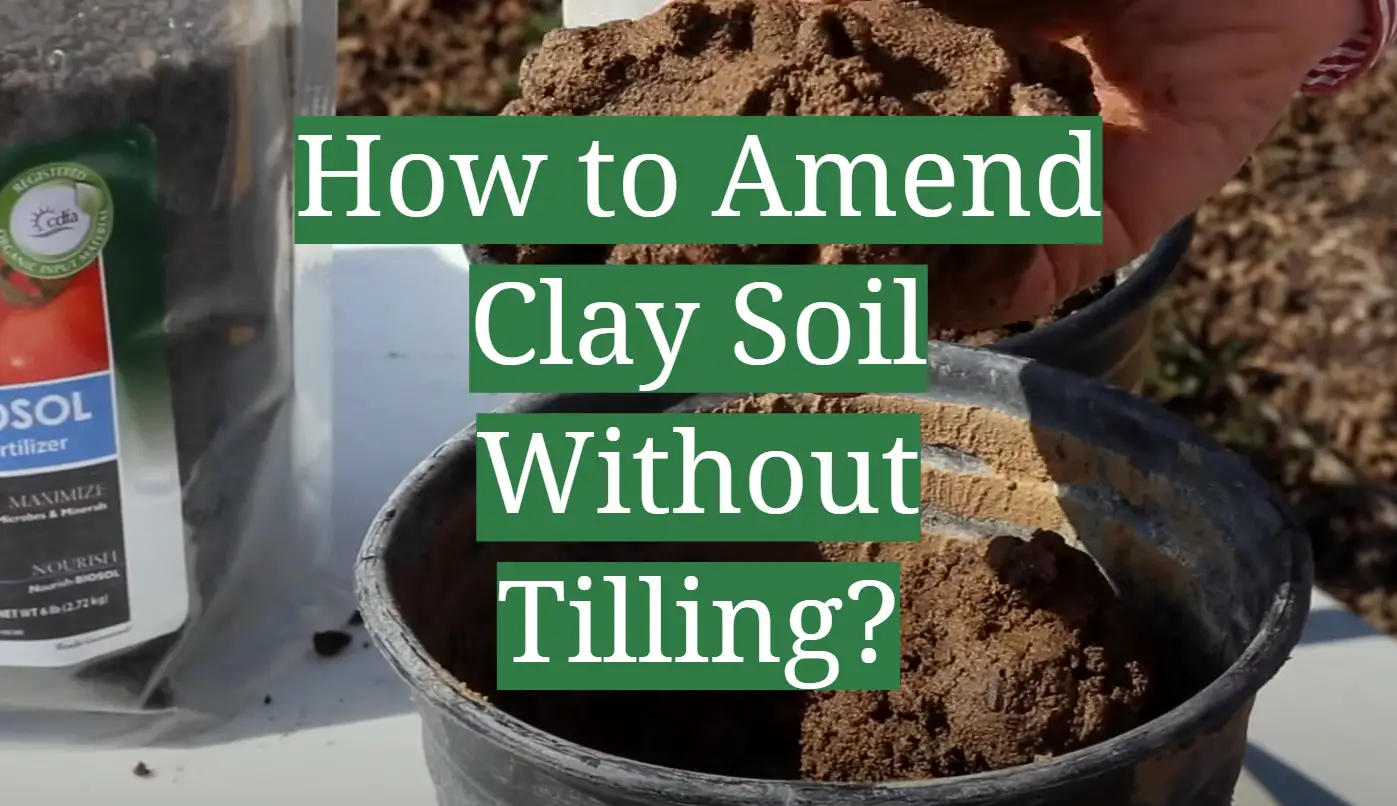




Leave a Reply
View Comments